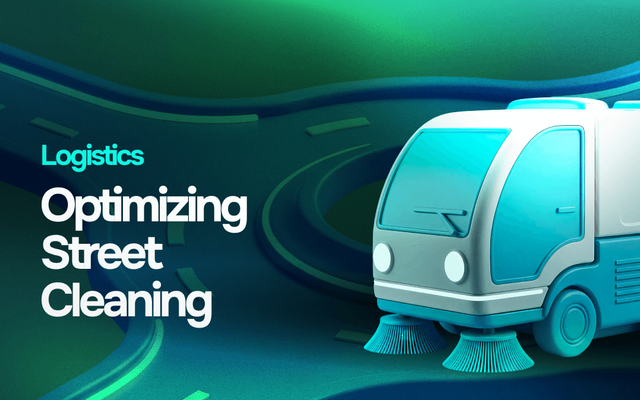
Remember when logistics managers relied on gut feelings and last month's data to make major decisions? Those days are disappearing faster than a delivery truck hitting a green light. Today's supply chains generate massive amounts of data every second, from GPS tracking and warehouse sensors to customer ordering patterns and weather forecasts.
Smart logistics companies have figured out how to turn this data flood into a competitive advantage. Instead of reacting to problems after they happen, they're using predictive analytics in logistics to spot issues before they disrupt operations. That delayed shipment from your main supplier? Predictive models saw it coming three days ago. That surge in demand for winter coats? The system already adjusted inventory levels last week.
The logistics world has always been about moving things efficiently from point A to point B. Now, with advanced analytics, companies can see around corners and make decisions based on what's likely to happen next, not just what already happened. This shift from reactive to proactive operations changes everything about how supply chains work.
Key Benefits of Predictive Analytics in Logistics
Predictive analytics for logistics delivers tangible improvements across every aspect of supply chain operations. These benefits compound over time, creating significant competitive advantages for companies that implement these technologies effectively.
The most successful logistics organizations use predictive analytics to optimize their operations while reducing costs and improving customer experiences simultaneously.
Improved Operational Efficiency
Predictive analytics transforms routine logistics operations by providing actionable insights before problems occur. Route optimization becomes incredibly precise when algorithms consider historical traffic patterns, weather forecasts, driver preferences, and real-time road conditions.
Warehouse management gets a major boost when predictive models forecast incoming shipment volumes and suggest optimal staffing levels. Fleet scheduling becomes more strategic when algorithms predict maintenance needs and optimize vehicle utilization across multiple routes.
These efficiency improvements include:
Dynamic route adjustments that save 10-15 minutes per delivery
Automated workforce planning based on predicted workload patterns
Optimized vehicle allocation that maximizes fleet utilization
Predictive scheduling that reduces idle time and bottlenecks
Smart inventory positioning that speeds up order fulfillment
Cost Reduction and Resource Optimization
Smart forecasting helps companies avoid two expensive mistakes: having too much inventory or running out of stock. Predictive models analyze customer demand patterns, seasonal fluctuations, and market trends to recommend optimal inventory levels.
Predictive maintenance represents another major cost-saving opportunity. Instead of following rigid maintenance schedules or waiting for equipment to break down, predictive models analyze sensor data to identify when vehicles and machinery actually need attention.
Resource optimization extends beyond inventory and equipment to include staffing levels, shipping methods, and shipment consolidation opportunities that reduce operational costs while maintaining service levels.
Enhanced Customer Satisfaction
Modern customers expect accurate delivery predictions and proactive communication about their shipments. Logistics predictive analytics makes this possible by analyzing historical delivery data, current traffic conditions, and operational capacity to provide realistic delivery timeframes.
When systems predict potential delays, customer service teams can reach out proactively with updated information and alternative options. This proactive approach turns potential frustrations into opportunities to demonstrate excellent service.
Real-time updates become more accurate when backed by predictive models, giving customers personalized information based on their specific shipment's conditions rather than generic tracking messages.
Risk Management and Mitigation
Supply chain disruptions can devastate logistics operations, but predictive analytics provides early warning systems for many potential problems. The technology identifies patterns that precede supplier delays, demand surges, or capacity constraints.
Proactive risk management strategies help logistics companies maintain service levels even when unexpected challenges arise:
Monitoring supplier performance patterns to identify reliability issues early
Analyzing weather data and seasonal trends to prepare for demand fluctuations
Tracking market indicators that suggest supply shortages or price increases
Identifying alternative suppliers and routes before primary options fail
Creating automated contingency plans that activate when risk thresholds are reached
Better Decision-Making and Strategic Planning
Long-term strategic decisions become more informed when based on predictive insights rather than historical data alone. Logistics companies can evaluate the potential impact of opening new distribution centers, changing supplier relationships, or investing in new technologies.
Peak season planning benefits enormously from predictive analytics. Instead of guessing capacity requirements, companies can model different scenarios and prepare appropriate resources with greater confidence.

Top Use Cases for Predictive Analytics in the Logistics Industry
Predictive analytics in logistics industry applications spans across all operational areas, from day-to-day route planning to long-term strategic initiatives. These use cases demonstrate how predictive technology solves real business challenges while creating measurable value.
Companies implementing these use cases typically start with one or two applications and expand their predictive analytics capabilities over time as they see positive results.
Route Optimization and Traffic Prediction
Modern route optimization goes far beyond finding the shortest distance between two points. UPS's ORION system analyzes more than 200,000 routing options for each driver route and considers dozens of variables, including historical traffic patterns, weather forecasts, and driver performance data.
UPS has deployed ORION's dynamic routing capabilities to 97% of its van fleet, with the system automatically adjusting routes based on real-time conditions. The company prioritizes right turns over left turns to reduce idle time and fuel consumption while improving safety.
Real-time traffic prediction helps drivers avoid congestion before it forms by analyzing current traffic speeds, accident reports, and typical congestion patterns. When problems are detected, alternative routes are calculated automatically.
Supply Chain Optimization
Amazon uses predictive analytics to accurately forecast demand for millions of products across various regions, analyzing customer behavior, search patterns, and social media trends. Their sophisticated algorithms merge traditional statistical models with machine learning to balance demand predictions with logistics operations.
Supply chain bottleneck prediction helps companies identify potential problems before they disrupt operations. The system monitors supplier performance, transportation capacity, and warehouse throughput to flag situations that could create delays.
Key supply chain optimization applications include:
Demand forecasting across multiple product categories and regions
Supplier reliability analysis to identify potential disruptions
Inventory optimization that balances carrying costs with service levels
Lead time prediction for more accurate planning
Seasonal demand planning that prepares for peak periods
Fleet Management and Maintenance
Predictive maintenance transforms fleet management by shifting from scheduled maintenance to condition-based maintenance. Sensors monitor vehicle performance metrics like engine temperature, oil pressure, and brake wear to predict when maintenance will actually be needed.
Vehicle lifecycle management benefits from predictive analytics by helping companies determine optimal replacement timing. The technology analyzes maintenance costs, fuel efficiency trends, and reliability patterns.
Fleet utilization optimization ensures vehicles are deployed efficiently across different routes and service areas, matching the right vehicles with appropriate assignments based on driver availability and customer requirements.
Warehouse and Inventory Management
Warehouse space optimization uses predictive analytics to forecast storage requirements and suggest optimal product placement strategies. Fast-moving items get positioned near shipping areas, while seasonal products are stored based on predicted demand cycles.
Walmart leverages predictive analytics at the heart of its supply chain process to reduce overstock and stay properly stocked on the most in-demand products. Their system requires suppliers to use real-time vendor inventory management, helping minimize inventory for products with declining sales while allocating resources to higher-demand items.
Labor management becomes more precise when predictive models forecast daily workload requirements, considering incoming shipment volumes, outbound orders, and seasonal patterns to recommend appropriate staffing levels.
Customer Demand Forecasting
Accurate demand forecasting enables logistics companies to align their capacity with customer needs. Predictive models analyze historical sales data, promotional activities, and market trends to forecast demand at various time horizons.
Seasonal demand planning becomes more sophisticated when algorithms consider multiple variables, including weather patterns, economic conditions, and competitor activities. Companies can prepare for peak seasons more effectively while avoiding over-investment in unnecessary capacity.
Successful demand forecasting implementations focus on:
Multi-channel data integration from sales, marketing, and customer service
External factor analysis, including economic indicators and competitor moves
Product lifecycle considerations for new versus established products
Regional variation analysis to optimize local inventory levels
Promotional impact modeling to predict campaign effectiveness

Last-Mile Delivery Optimization
Last-mile delivery represents the most expensive and complex part of most logistics operations. Predictive analytics helps optimize delivery routes, predict customer availability, and estimate accurate delivery windows.
Advanced route planning systems analyze historical delivery data, traffic patterns, and customer preferences to optimize delivery operations. The technology helps determine optimal routes while considering real-time factors that could affect delivery success, such as weather conditions and traffic incidents.
Customer preference analysis helps improve delivery success rates by identifying when customers are most likely to be available for deliveries, reducing failed delivery attempts, and improving satisfaction.
Transforming Logistics Through Predictive Intelligence
The logistics industry stands at a turning point where data-driven decision-making separates successful companies from those struggling to keep up. Predictive analytics delivers measurable benefits across all operational areas while creating sustainable competitive advantages.
Companies that implement predictive analytics report significant improvements in operational efficiency, cost reduction, customer satisfaction, risk management, and strategic planning. These benefits compound over time as organizations build more sophisticated analytical capabilities and integrate insights more deeply into their operations.
The use cases for predictive analytics continue expanding as technology becomes more accessible and logistics operations generate increasing amounts of data. From route optimization and supply chain management to fleet maintenance and customer demand forecasting, predictive analytics provides actionable insights that drive better business outcomes.
Success requires commitment to data quality, analytical expertise, and organizational change management. Companies that invest in these capabilities position themselves to thrive in an increasingly competitive and complex logistics market. The question for logistics leaders becomes not whether to adopt predictive analytics, but how quickly they can implement these technologies to unlock new levels of operational excellence and customer satisfaction.







